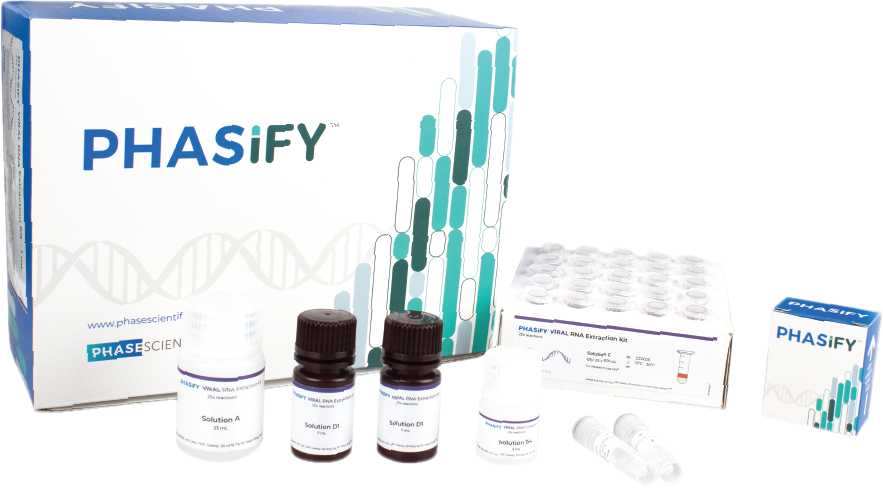UCLA professors, alumni help create more sensitive coronavirus test kit

UCLA professors and alumni have helped develop a more accurate COVID-19 testing kit using a new RNA extraction technique that analyzes liquid material rather than solid. The group is also part of Phase Scientific, a biotechnology company working to test and produce these kits. (Courtesy of Felix Chao)
By Zhichun Li
May 8, 2020 9:38 p.m.
UCLA bioengineering professors and alumni have developed a more accurate COVID-19 testing kit using a new RNA extraction technique.
Daniel Kamei, a bioengineering professor at the UCLA Samueli School of Engineering, supervised two doctoral students who founded Phase Scientific along with Kamei and UCLA professor Benjamin Wu. The company recently developed a novel technique for the liquid-phase extraction of RNA, which can process a greater portion of RNA in a sample from a potential COVID-19 patient than the standard solid-phase extraction method of testing.
RNA, or ribonucleic acid, contains a unique set of genetic instructions for each virus. COVID-19 testing kits extract RNA from a patient sample and analyze it for distinct COVID-19 RNA, Kamei said. Liquid-phase extraction, or LPE, can process a greater portion of RNA contained in a prepared sample than solid-phase extraction, or SPE, which is currently the method of RNA extraction in standard COVID-19 testing kits.
The SPE kit produces an extracted sample, called an elution, with a low concentration of viral RNA for analysis, so the concentration threshold to detect the presence of COVID-19 can be very difficult to meet, said Felix Chao, a founding team member at Phase Scientific and a UCLA alumnus.
The LPE method allows for a low volume of the elution, increasing its RNA concentration, which helps subsequent testing procedures to more accurately identify patients with COVID-19, Chao said.
The new technique can enable a final viral RNA concentration on average 15 times greater than when using SPE, Chao said.
Garrett Mosley, head of research and development at Phase Scientific and a UCLA alumnus, said solid surface extraction is more susceptible to contamination and patient-to-patient sample variability, both of which can prevent target RNA from being bound to the solid surface during the extraction procedure.
The SPE method requires a large elution volume to release extracted RNA from the solid surface, Mosley said. Extracted RNA does not attach to liquid surfaces, so LPE can produce a much more concentrated elution.
Higher concentrations of RNA can reduce the number of amplification cycles – which are used to enrich the elution for analysis – that are required to detect the target virus, thereby increasing the sensitivity of detecting a patient with COVID-19, Chao said.
LPE is a versatile technique that can work with different biomarkers to identify different targets. Therefore, the company was able to quickly direct its resources to develop a new testing kit for COVID-19, Chao said.
Chao mentioned the company had been working on cancer diagnosis using LPE, before the outbreak of the pandemic.
“We have been working on cancer liquid biopsy to improve the recovery of target DNA, before the outbreak,” Chao said. “We took our know-how and technology from DNA to RNA.”
To successfully adapt the LPE technique, the researchers had to overcome technical hurdles such as changing from plasma samples to naso- and oropharyngeal swab samples, breaking down the layer of fat encasing the viral RNA, and the nuanced chemical differences between DNA and RNA, said Mosley.
The new test kit can be used almost the same way as the current SPE test kits, Mosley said, and medical labs can integrate the new test kit into their workflow without much difficulty.
The extraction kits have been validated by hospitals in Wuhan, China, the epicenter of the pandemic, Chao said.
LPE-based extraction kits can increase the overall COVID-19 testing capacity as the significant shortage of RNA extraction kits is a big issue for the current pandemic response, Kamei said.


